One of the most fascinating palaces in the world is also one of the major tourist attractions in London.
In this post, you’ll discover the ultimate list of interesting Kensington Palace facts.
1. It’s located in a Royal Borough in London
Kensington Palace is a residence of the British Royal Family and is located in the Royal Borough of Kensington and Chelsea. This borough is situated in the western part of central London.
This Inner London borough has indeed royal status and is the smallest of all boroughs in London and it’s the second smallest district in England.
It’s situated directly to the west of the City of Westminster, an Inner London City and Borough which is home to multiple famous landmarks, including but not limited to the Palace of Westminster, London’s famous clocktower Big Ben, and Westminster Abbey.

2. The palace is adjoined by a fabulous garden
The Kensington Gardens were originally the private garden of the palace. They are one of the Royal Parks of London, a total of 8 parks that were originally solely used by the Royal Family for recreational purposes, mostly hunting.
These gardens cover a total area of 107 hectares (265 acres) and are adjoined on the east by another Royal Park in London called Hyde Park which covers an area of 142 hectares (350 acres).
These parks have been open to the public since 1851 and are now one of the most important green areas, referred to as a “green lung,” in the center of London.
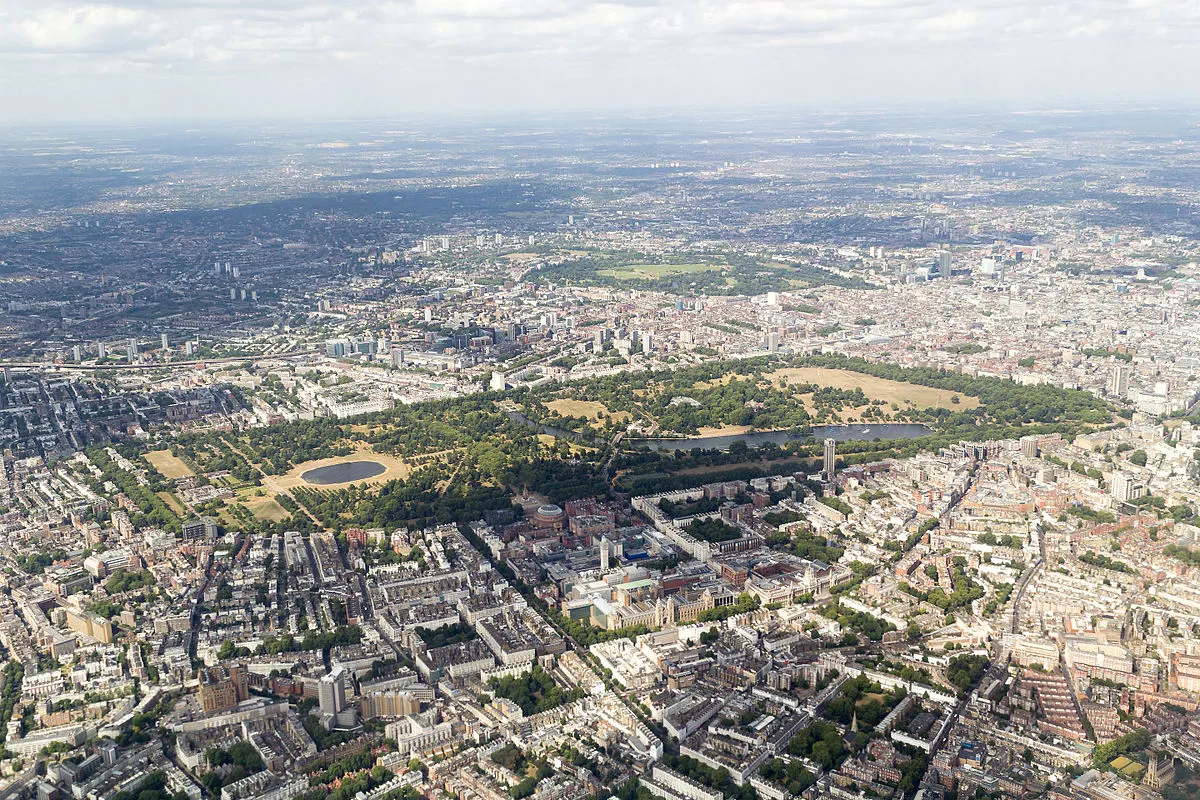
3. Multiple Royal Family members still live at Kensington Palace
The palace has been an official residence of the British Royal Family since the late 17th century. Even though the last reigning monarch who used the palace as his official residence dates back to the 18th century, many members of the Royal Family still live here.
These members include:
- The Duke and Duchess of Cambridge.
- The Duke and Duchess of Gloucester.
- The Duke and Duchess of Kent.
- Prince and Princess Michael of Kent.
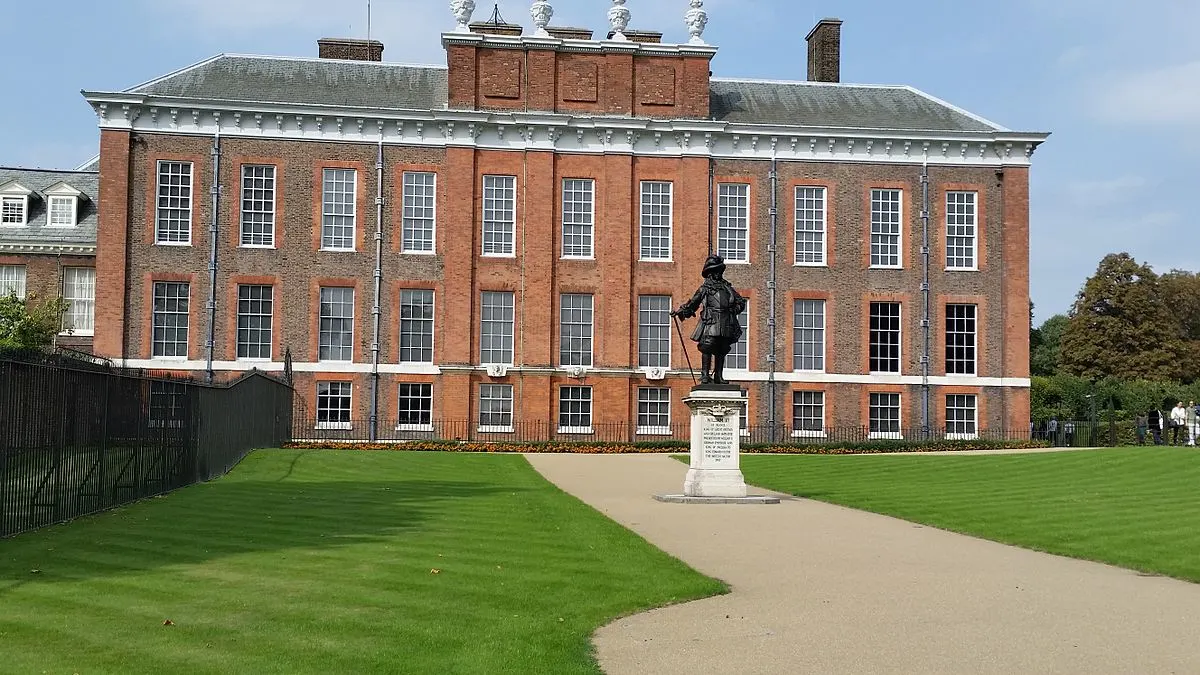
4. Princess Diana lived in the palace until her tragic death
Shortly after Charles, Prince of Wales, and his wife, Diana, Princess of Wales, married in the year 1981, they were moving to Apartments number 8 and 9 of Kensington Palace. This also means that Prince William and Prince Harry spent their entire childhood at the palace.
One of the most remarkable Kensington Palace facts is that even though their marriage ended in a divorce, Princess Diana continued to live in the palace afterward until her tragic death in 1997.
Shortly after her death, the gates of Kensington Palace were flooded with over 1 million bouquets as a tribute.
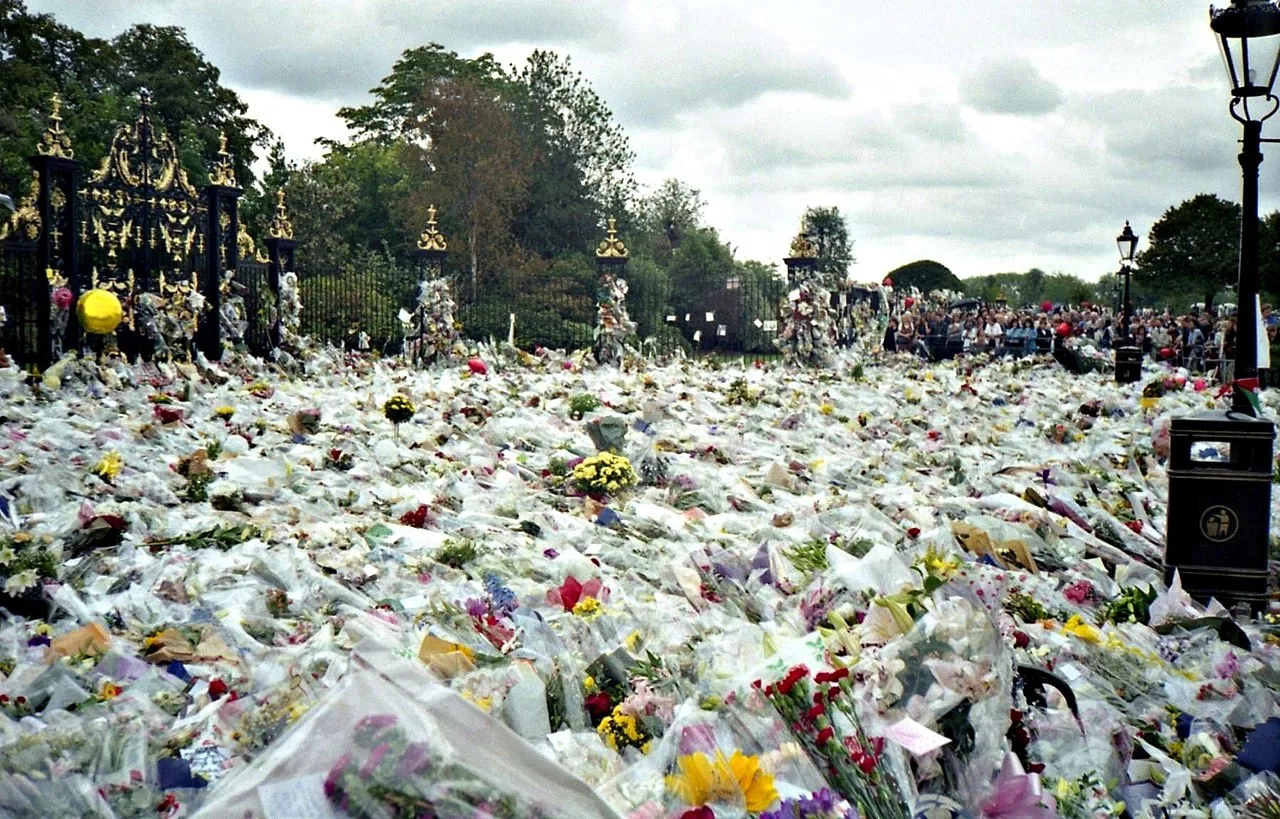
5. The original structure on the site dates back to the 17th century
The first mention of a building on the site was when a 2-story Jacobean mansion was built here in the year 1605. This style is considered to be the second phase of English Renaissance architecture.
This mansion was built in what was then referred to as the village of Kensington by Sir George Coppin, and sold to Heneage Finch, 1st Earl of Nottingham, in the year 1619.
That’s why the mansion was referred to as the “Nottingham House” all throughout the 17th century.
6. The King and Queen of England bought the property in 1689
The mansion officially became Royal Property in the year 1689, when the newly crowned King William III and Queen Mary II of England bought the property from the son of the 1st Earl of Nottingham named Daniel Finch, 2nd Earl of Nottingham.
What’s remarkable is that the mansion and its gardens must have been quite impressive already back then because they paid the sum of £20,000 for the property in 1689, the equivalent of well over £5,000,000 today!

7. Kensington Palace was expanded by a renowned architect
William and Mary didn’t waste any time and hired one of the most renowned English architects of the 17th century, Sir Christopher Wren (1632-1723).
He’s considered to be one of the most famous architects in history and is credited with the rebuilding of at least 52 churches in the London area after the Great Fire of London in 1666. His ultimate masterpiece is one of the most famous churches in the world, St. Paul’s Cathedral in the City of London.
This initial expansion phase included a three-story pavilion at each of the four corners of the original mansion, as well as the Queen’s Gallery which was an extension of the Royal Apartments.
Unfortunately, Mary died of smallpox just 5 years later in 1694 and William died of pneumonia in 1702, both at Kensington Palace.
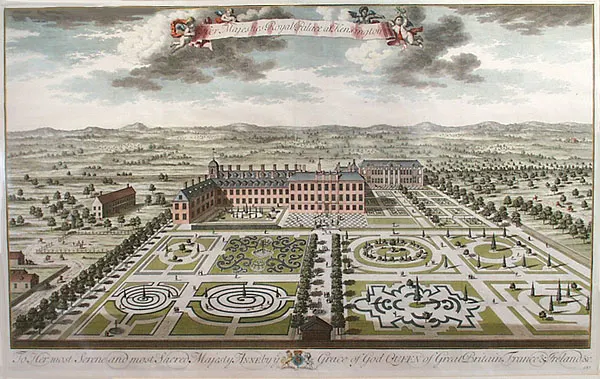
8. The palace’s orangery was built in the year 1704
The sudden death of both the King and Queen shortly after they had moved to the palace and started expanding means that they didn’t see their project completed. Their work was continued in the early 18th century by Queen Anne who became the new resident of the palace.
Apart from finishing the ongoing project of the buildings, she also focused on the gardens of the palace. She had a magnificent Baroque style parterre built which covers an area of 30 acres (120,000 square feet).
One of the most remarkable structures in the garden dating back from this period is the Orangery, a popular structure back in the day that was included in just about any famous palace in Europe back then and which was completed in 1704.
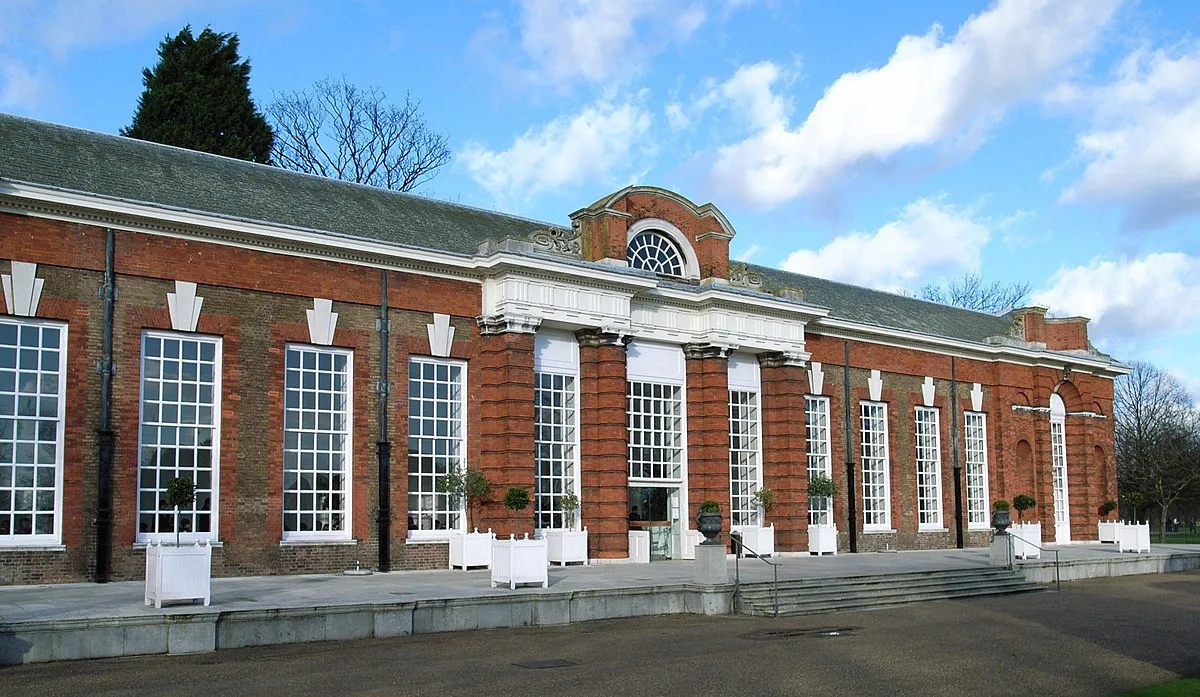
9. The interior decoration was also completed in the early 18th century
The next King to live in the palace was King George I who made major contributions to the palace and commissioned the construction of multiple additional rooms. These included the Privy Chamber, the Cupola Room, and the Withdrawing Room.
Especially the Cupola Room is a magnificent chamber that was built with an octagonal design and features a domed ceiling that is elaborately painted in gold and blue.
King George I completed most of the palace as it appears today, including the interior decorations which were finished by English painter and architect William Kent between 1722 and 1727.
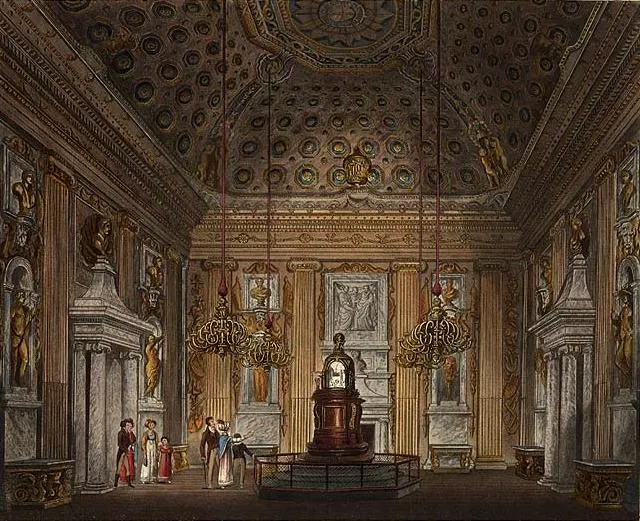
10. The last reigning monarch to use the palace died in 1760
The final reigning monarch to actually live in the palace was King George II. He didn’t make any particular contributions to the palace itself, but his wife, Queen Caroline, commissioned the construction of “The Serpentine” in 1730, a 40-acre (16 hectares) recreational lake now located in Hyde Park.
King George II died at the palace in the year 1760. His wife had passed away in the year 1737 and many of the rooms had already started to deteriorate by then.
When King George III ascended to the throne in 1760, the palace lost its role as the main residence of the reigning monarch but was still used for minor royalty.

11. Queen Victoria was born here and that’s why the palace still exists
One of the residents of Kensington Palace in the early 19th century was Prince Edward, Duke of Kent and Strathearn, and the fourth son of King George III. He only had one child named Alexandrina Victoria who was born on May 24, 1819, and who spent her entire childhood at the palace.
At the age of 18, the young woman became Queen Victoria (1819-1901) and was coronated a year later on June 29, 1838, at Westminster Abbey. She didn’t stay in her childhood home, though, and moved with the court to Buckingham Palace.
She was the first monarch to take up residence there and it’s still the official residence and administrative headquarters of the monarch of the United Kingdom today.
By the late 19th century, Kensington Palace had deteriorated tremendously and questions were raised about whether or not to demolish it. If not for Queen Victoria, it might have well have been, but she mentioned that “while she lived, the palace in which she was born should not be destroyed.”
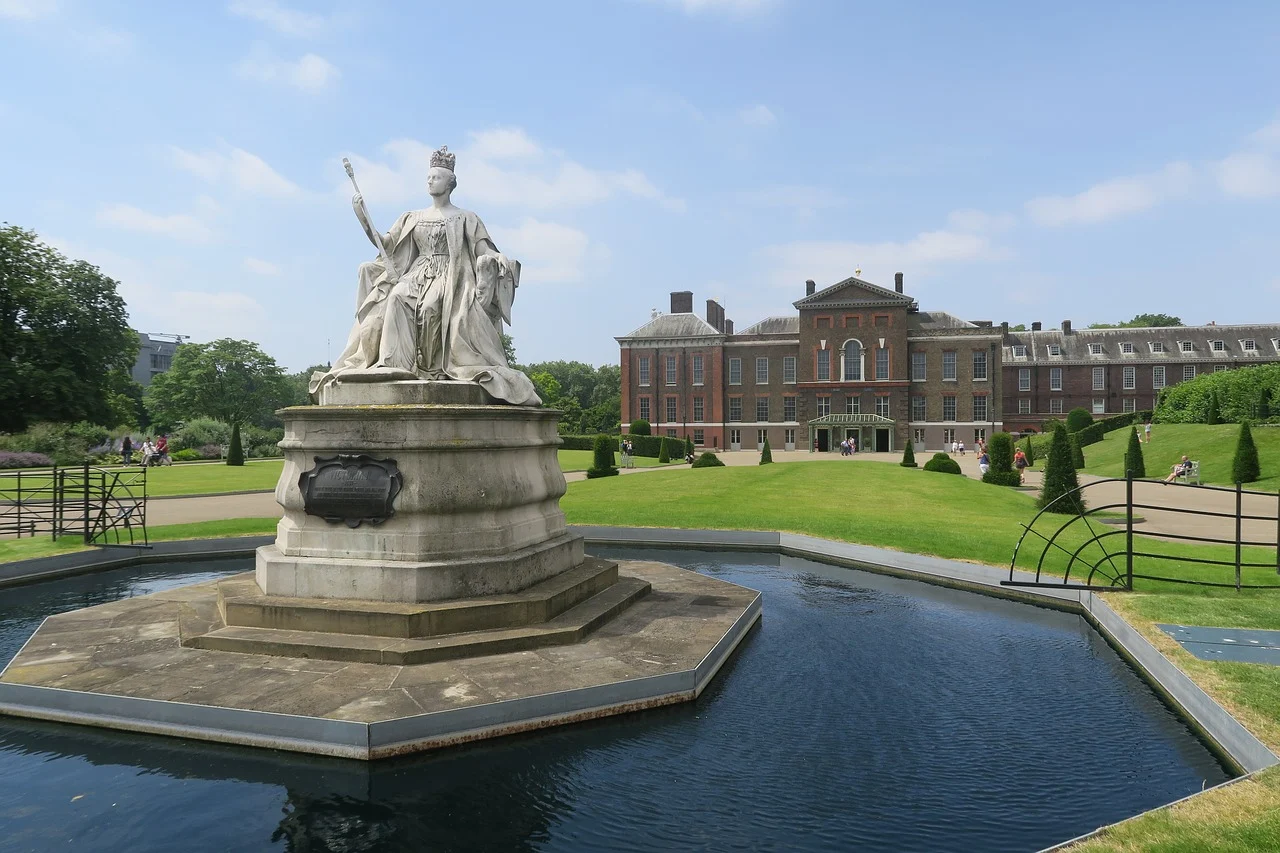
12. Part of the palace has been open to the public since 1899
Shortly before Queen Victoria passed away, funds were allocated to restore the dilapidated palace, which happened in the year 1897. Just 2 years later the restoration works were completed.
One of the most fascinating Kensington Palace facts is that the State Rooms opened to the public on May 24, 1899, the birthday of Queen Victoria.
These rooms are still open to the public today and are a major tourist attraction in London!



